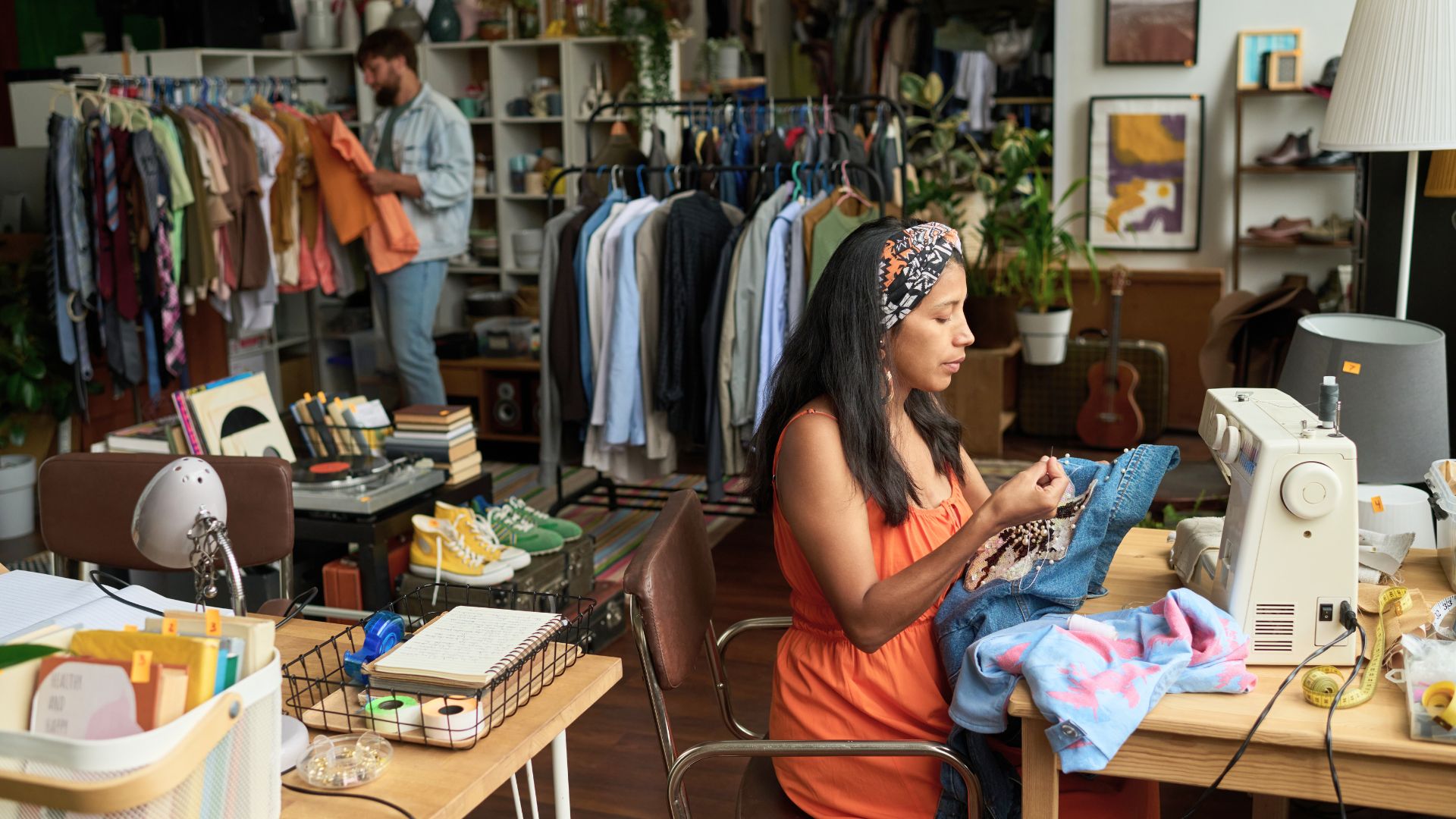Circular fashion isn’t a trend in search of a headline—it’s a practical response to the crisis of stuff piling up in our closets, drawers, and warehouses. Steven Bethell, co-founder of Bank & Vogue and Beyond Retro, traces the arc from the company’s early days in Ottawa to Beyond Retro’s storefronts on Europe’s prime retail streets, showing how secondhand has built real cultural capital.
The scale is startling: Americans buy roughly 450 million pairs of jeans each year and keep garments for an average of just two and a half years. That’s not only volume—it’s velocity. If the fastest way to shrink fashion’s footprint is to wear what already exists, then the real challenge is turning a fragmented, variable stream of used apparel into consistent, desirable products that people actually want to wear. The value of secondhand goes beyond eco-guilt; pre-loved clothes carry patina, story, and authenticity that mass-produced novelty can’t fake.
Building the Infrastructure of Circular Fashion
Authenticity doesn’t move the needle without infrastructure. Bank & Vogue sits at the center of a complex ecosystem of charities, private collectors, thrift operators, and brand partners. The goal: to find each item’s best next life—whether through resale, repair, remanufacturing, or mechanical recycling.
Beyond Retro’s retail team never treated vintage as a passing fad. Instead, their consistency and curation attracted both loyal customers and major landlords. Shops in destinations like King’s Cross, Oxford Street, and Stockholm’s Drottninggatan prove the shift: secondhand now belongs on the front row, not the back alley. That legitimacy helps mainstream consumers see secondhand as a first choice, not a compromise.

From Inputs to Impact
The most striking leap is treating used goods as inputs for new manufacturing. When Converse collaborated on Renew Chucks, Bank & Vogue supplied sorted denim mapped to a defined color range so factory lines could operate with confidence. With Coach, post-consumer denim was transformed into components for the Soho bag—validated by life cycle assessments showing up to 80% carbon savings and 98% water savings compared to virgin materials. Wrangler’s Rewear line carries the same proof: jackets, pants, and shirts built from existing textiles can deliver both brand integrity and environmental benefit.
These aren’t marketing claims—they’re measured impacts that give design leaders the confidence to defend circular decisions inside their companies. The lesson is clear: difference can be a feature, not a flaw, if you design for it.
Designing for Difference
Traditional manufacturing obsesses over identical outputs—the “McDonald’s French fry problem.” Bank & Vogue flips that instinct, creating systems that accept variation. Denim is categorized into light, medium, and dark “color buckets” to enable factories to sew consistently. Other projects, like Hawaiian-print Chucks, lean into uniqueness so no two pairs are the same.
This “consistently inconsistent” approach requires data, volume, and feedback loops across retail, wholesale, and factory partners. The payoff: a supply chain that delivers reliability without forcing sameness.
Changing the Language of Fashion
Steven Bethell bristles at the word waste—because in nature, nothing is wasted. Leaves become soil. Fibers can have many lives. By calling textiles inputs, the right questions emerge: How many lives can this fiber have? Which process saves the most embodied energy and water?
Even when items can’t be resold or remade, Bank & Vogue supplies over 26 million pounds of apparel to recyclers each year, keeping materials in play until higher-value uses return. The North Star is a portfolio of pathways, matching each item to its best possible next use.
Community at the Core
Charities like Goodwill and Salvation Army fund shelters, training, and services with proceeds from donated clothing. Bank & Vogue buys post-retail surplus, extending value long after the best has sold locally. That spirit of partnership carries through to brands: Converse designers who embraced authenticity, Coach executives who demanded LCA proof, Wrangler teams building mainstream circular capsules.
For Steven, it comes down to finding the tribe—the people who love material history and welcome new forms. That’s how circular fashion grows from niche to norm.
This blog post was generated using Buzzsprout’s CoHost AI tool and is based directly on content from the associated podcast interview. This article has been reviewed and edited by Tomorrow’s World Today staff.







